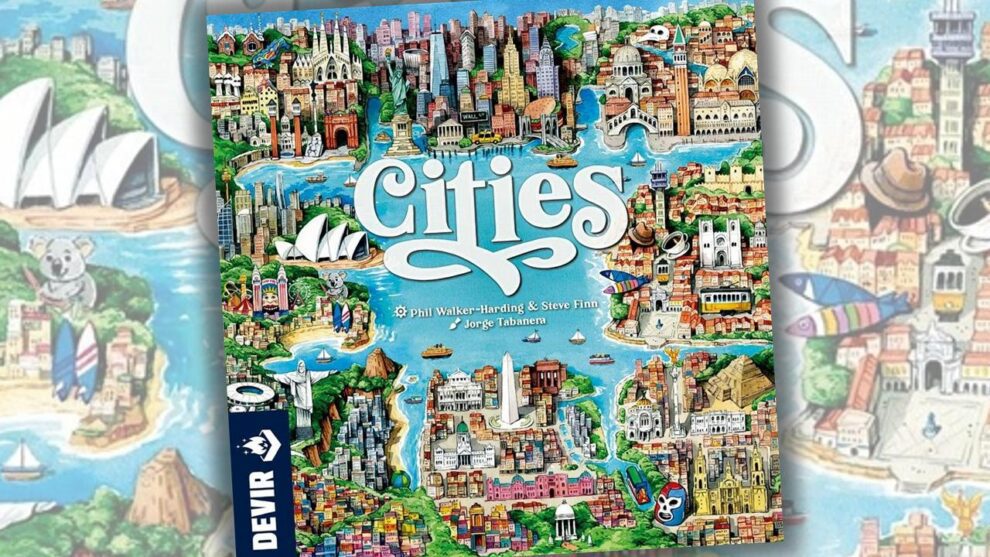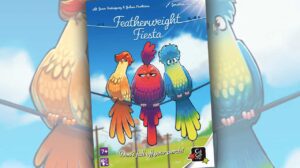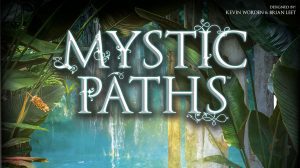Disclosure: Meeple Mountain received a free copy of this product in exchange for an honest, unbiased review. This review is not intended to be an endorsement.
We adore the work of designer Phil Walker-Harding quite a bit around these parts. Between a designer interview and reviews of almost every game Walker-Harding has put out over the last five years, it’s safe to say that we are excited whenever we get the chance to work through this artist’s latest designs.
One of Walker-Harding’s most recent designs is Cities (2024, Devir Games), a co-design with partner Steve Finn. Finn is best known for the game Biblios, and while I have not played Biblios, it is well regarded by friends in my Chicago-area gaming networks.
I am sure Finn and Walker-Harding share a philosophy regarding accessible gaming experiences, because Cities is such an easy game to learn while still providing players with interesting choices over a lightning-fast playtime. Across three review plays (one play each at two, three, and four players), none of my plays of Cities lasted longer than 40 minutes, and that included the teach.
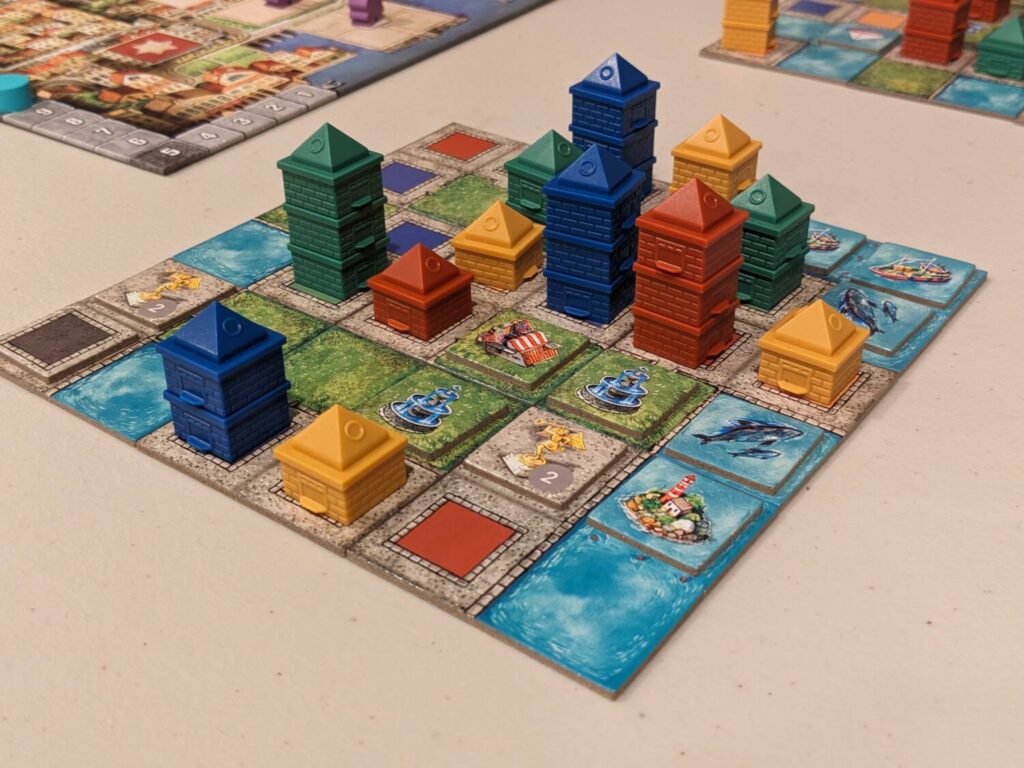
What City Do You Want to Visit First?
Cities is a 2-4 player tile-laying city building game. Over the course of a series of rounds, players will place workers in four separate areas of the main board to select building pieces, tiles, features, or scoring cards to build up a tidy 3×3 grid in their respective player areas to align with public scoring milestones. Combined with a set collection element for scoring park and water spaces within each city, Cities pushes players to figure out a small puzzle on each turn while competing with other players to snatch up the items that best fit a particular game’s strategy.
The game’s best moments arrived when watching players quickly consider which of the game’s four selection rows they wanted to hit first on each of their turns. Each row on the main board holds one of the four items mentioned above (scoring cards, city tiles, features, or building pieces), and in each round, a player can only pick one of the four rows to take something. In a minor-but-surprisingly-effective twist, one of each row’s four items is unknown…so, for example, if a player takes the final city tile in that row, they will not know what they are getting until they commit to taking it. “Mystery Meat” is right!
This symmetry—each round, a player can only take one set of features, one city tile, one scoring card, and one set of building pieces—got everyone excited during my games. It also made the rounds accelerate nicely, because once a player has selected something from a row or two, choices become limited by both the row and the number of items left in the rows they can legally choose from. By the final turn of each round, different players are usually last to visit a row, and in our four-player game, we basically took our final turns simultaneously since there wasn’t much of a decision left to be made.
Trying to math out which set of items to select is tied quite well to each of the game’s public objectives. Four double-sided cutouts fit into a space at the top of the Cities main board, with each side showing a major city (Venice, Barcelona, New York, etc.) that is simply a flavor profile for the three public objectives that grant players extra points for completing various elements while building their city. In my experience—with all three of my games deciding a winner by three points or less—the objectives are absolutely critical to end-game scoring, so everyone has to pursue these three objectives to win.
Some of the objectives are quite difficult. In my final play, one of the objectives asked players to place three features in a park region and three more in a water region within a city. On its own, that isn’t too bad—finding features to place in an area is doable, and as long as a player focused on drafting city tiles that had either water or park spaces, they were good.
But end-game scoring only benefits a player when they have unique features in their parks or water areas. So, do I chase the public objective, or try to balance the race for unique features with my end-game scoring requirements?
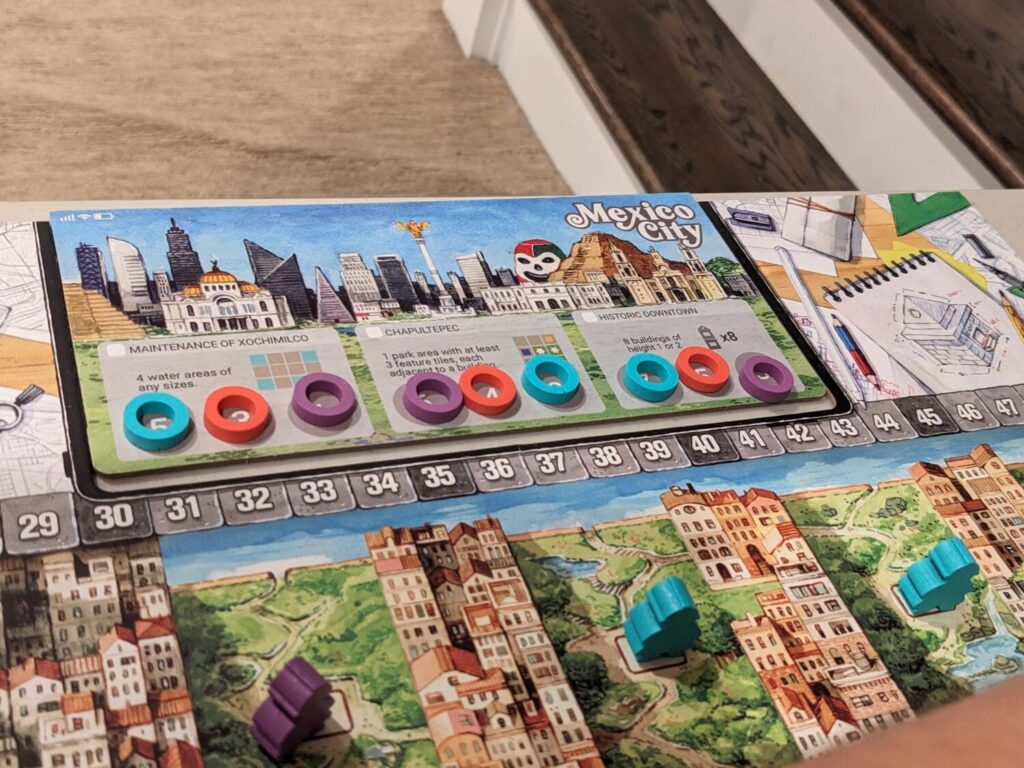
“Man, That Was Fast!”
Cities has a nice tension to it while offering just-tense-enough turns to give players the feeling of real choice as they build out their cities while trying to maximize their scores using the objectives and their eight personal scoring cards. The game has a family-weight feel to it, so I know I will be able to play this with my kids in the very near future, and with games lasting about 30 minutes (with a two-player game that lasted only 20 minutes), Cities is exceptionally easy to table.
In fact, my three-player game happened only because three of us were waiting for another table to finish a short game and I was able to teach and play a complete game in less than a half-hour.
“Man, that was fast,” one player commented after that game wrapped up. “But not too fast…I liked that each turn was thinky but not complex, and that there was always something valuable to do.”
And that is Cities in a nutshell. It has a nice puzzly feel to it and building a 3×3 grid is manageable for almost anyone. My wife and I could knock this out while a casserole is in the oven. The game’s two-player format shrinks the number of rounds and gives players eight workers to place instead of four, with a maximum of two workers that can be placed in a row per round.
With eight sets of milestones included in the box, the game still feels fresh even after three plays. The production is great, with chunky buildings that stack up and create a vibrant look to such a small “city” by the time games wrap up. The cards clearly denote scoring requirements, there are player aids that remind players of final scoring, and I loved the way the image on the backs of the city tiles line up to blend in with the design of the main board. (Devir seems to have figured out great production at fair prices, so I won’t beat that drum again here.)
While this is my first play of a Finn design, Walker-Harding continues to work wonders for my tastes. Imhotep, Sushi Roll, Sushi Go Party, Super Mega Lucky Box, and Gizmos are all great games that have worked for both my gamer friends and my family that I will play any time. Now, add Cities to that list!


